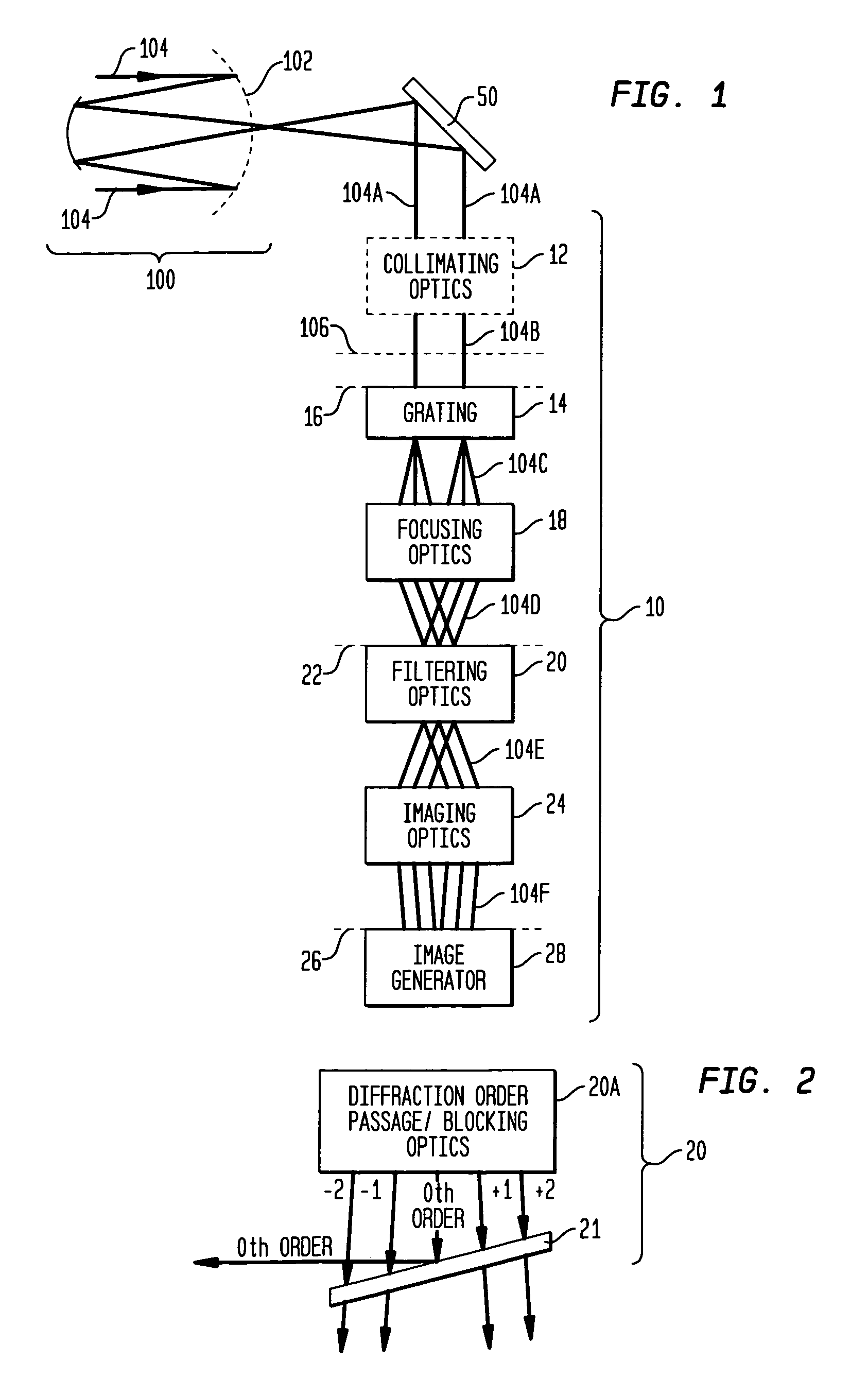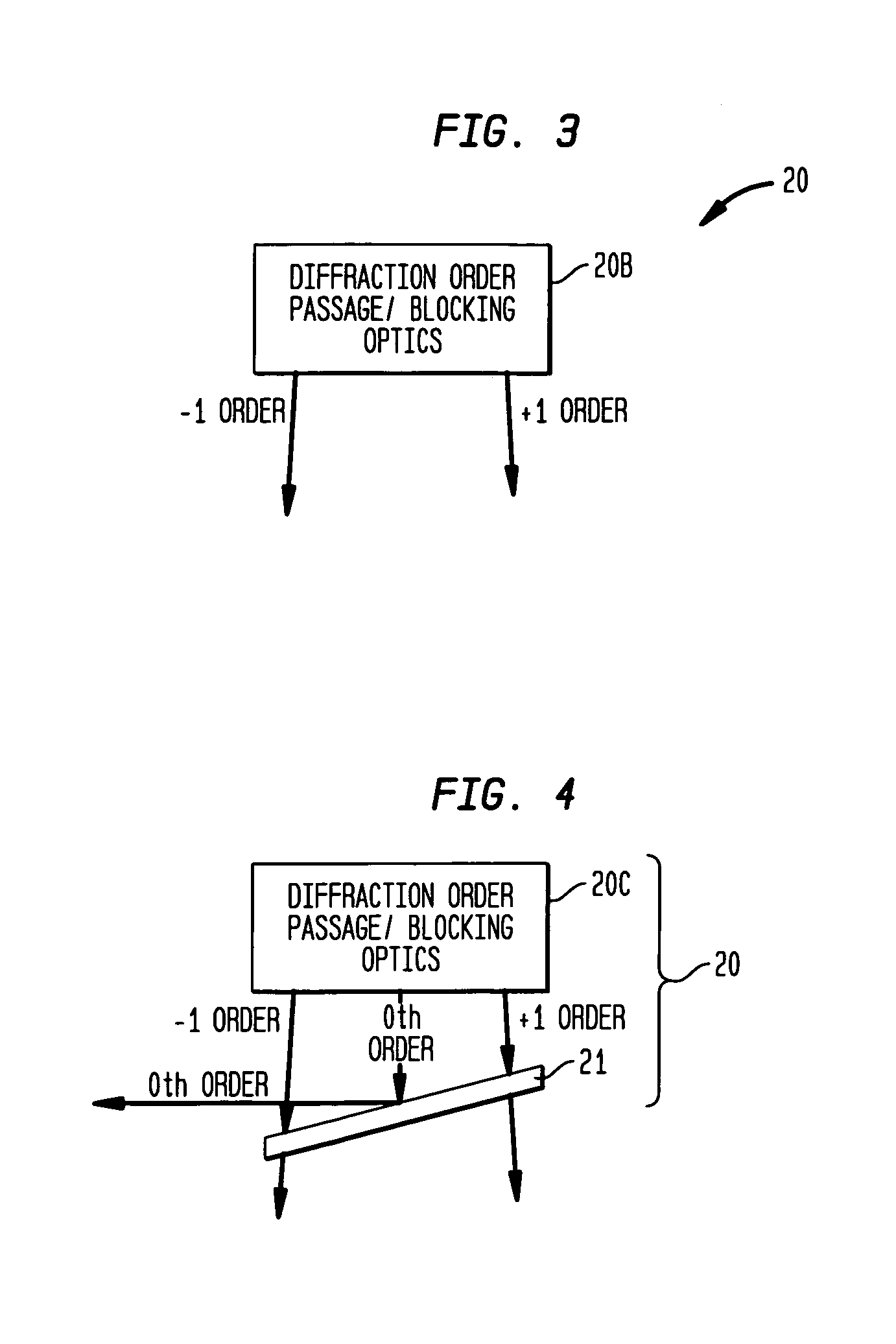Achromatic shearing phase sensor for generating images indicative of measure(s) of alignment between segments of a segmented telescope's mirrors
a technology of achromatic shearing phase and achromatic shearing, which is applied in the field of sensors, can solve the problems of limiting the capture range, affecting the measurement accuracy of edge sensors and their measurements, and not being well suited to long-term us
- Summary
- Abstract
- Description
- Claims
- Application Information
AI Technical Summary
Benefits of technology
Problems solved by technology
Method used
Image
Examples
Embodiment Construction
)
[0034]Referring now to the drawings, and more particularly to FIG. 1, an embodiment of an achromatic shearing phase sensor according to the present invention is shown and is and referenced generally by numeral 10. Sensor 10 will be described herein for use with a telescope 100 of any known type in the art that has a primary mirror divided into a plurality of mirror segments 102 that receive incoming irradiance 104 from a source (not shown) as is known in the art. Mirror segments 102 focus irradiance 104 at a location where an end user can view the focused image. For purpose of the present invention, a portion of irradiance 104 will be used by sensor 10 to generate an image that is indicative of one or more measures of alignment between two adjacent mirror segments.
[0035]Mirror segments 102 require initial alignment and alignment from time-to-time during the life of telescope 100. In general, sensor 10 generates an image associated with large portions of two mirror segments. However...
PUM
 Login to View More
Login to View More Abstract
Description
Claims
Application Information
 Login to View More
Login to View More - Generate Ideas
- Intellectual Property
- Life Sciences
- Materials
- Tech Scout
- Unparalleled Data Quality
- Higher Quality Content
- 60% Fewer Hallucinations
Browse by: Latest US Patents, China's latest patents, Technical Efficacy Thesaurus, Application Domain, Technology Topic, Popular Technical Reports.
© 2025 PatSnap. All rights reserved.Legal|Privacy policy|Modern Slavery Act Transparency Statement|Sitemap|About US| Contact US: help@patsnap.com



